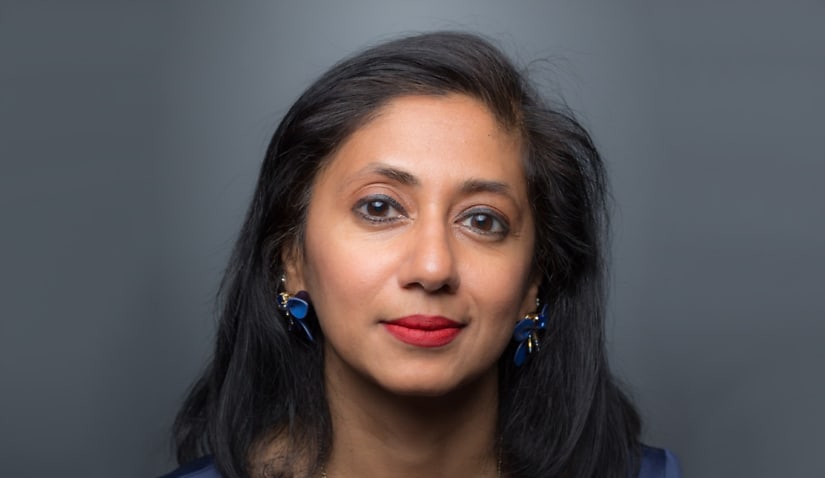Following the announcement that the United Kingdom Law Society elected its first Asian, first Muslim president, Lawyers Weekly spoke with Molina Asthana, national president of the Asian Australian Lawyers Association (AALA), to discuss diversity in Australia’s legal profession.

This month, solicitors in the United Kingdom celebrated south Asian heritage month. The celebrations were marked by the announcement of Lubna Shuja as president of the UK Law Society, making her the first Asian, first Muslim, and seventh woman president.
“This should be the basis for collaboration,” she said. “It should also help build the collective effort that is needed to improve racial equity and inclusion across the legal sector and wider society.”
Lawyers weekly spoke with Molina Asthana, national vice-president of the AALA; she reflected on diversity in Australia’s legal profession.
“It is quite a milestone to see someone like Ms Shuja take on this leadership position,” she said. “We still have a long way to go in Australia.
“It is important that the contributions of people of diverse backgrounds are recognised and celebrated. Not only does that showcase our diversity but also sends a strong message that we value our cultural capital.
“There’s an increase in the number of south Asians in the legal profession in Australia however we do not see them in leadership positions, as partners of big firms or as judges in the higher judiciary.
“We have just started seeing a few but you could count them on the fingers of one hand. This is in contrast to our latest census results that show that south Asians are the fastest growing community in Australia.
“This is unfortunate and happens largely because of the bamboo ceiling and the unconscious bias that we face as Asians in the legal profession.”
Ms Asthana spoke about the stigmas faced by Australian Asians: “There are strong stigmas and biases that exist in many industries, but tends to be worse for those that are traditionally hierarchical like the legal industry.
“As a woman of colour myself, I face the double glazed glass ceiling. Though successful in my own right, I am the first woman of south Asian heritage to be elected as president elect of any Law Society in Australia, however I still face barriers and biases.
“I have had to work doubly hard to prove myself, my mistakes are picked up and highlighted more so than people of Anglo-Saxon background, my efforts are constantly undermined, I am often spoken over and considered a troublemaker for having a different opinion. Similar experiences have been shared by other members of our association and lawyers of diverse backgrounds.
“There are socio-cultural barriers to inclusion, for example white men and women’s clubs, private school culture, footy conversations, Friday night drinks and steak clubs that exclude people from culturally diverse backgrounds.”
When asked about how Australia can build greater diversity in the legal profession, Ms Asthana answered: “I am a firm believer that diversity breeds further diversity.
“I certainly believe in quotas and targets to encourage representation in the profession. I see a lot of organisations having diversity and inclusion committees and the like, however many of the initiatives undertaken are tokenistic and do not result in diversity in the senior echelons.
“Organisations should report on cultural diversity in addition to gender equality. Accountability is important. A plan is as good as the paper it is written on if there are no key performance indicators. Simply ticking the box is not going to cut it.
“Until we see organisations making a conscious effort to change the makeup of the leadership, we will continue to lag behind in terms of representation. For that we need buy-in from the courts, the law firms, the law societies, the government and all other stakeholders.
“Organisations should not think of diversity and inclusion as the role of human resources. It should be embedded in their strategy and as an agenda item on boards, in all their policies, in the work culture and overall structure of the organisation.
“I think every law firm and practice should make it mandatory to have unconscious bias training that is provided by the Law Council.”
Ms Asthana discussed the work that the AALA does to improve diversity in the law profession, including advocating for greater representation for Asian Australians in senior positions and providing training, support and visibility to equip them with skills to traverse the “monochromatic legal landscape” with confidence.
The AALA supports Asian Australian lawyers through scholarship programs, mentoring, networking, advocacy workshops, and initiatives for foreign qualified lawyers. They also engage the public with panel discussions, summits and collaborations with other organisations. It works with law societies, judiciaries, the bar, legal educational bodies, universities and other stakeholders. They have grown from 50 members based solely in Victoria to over 1,300 members with branches in every Australian state and territory.